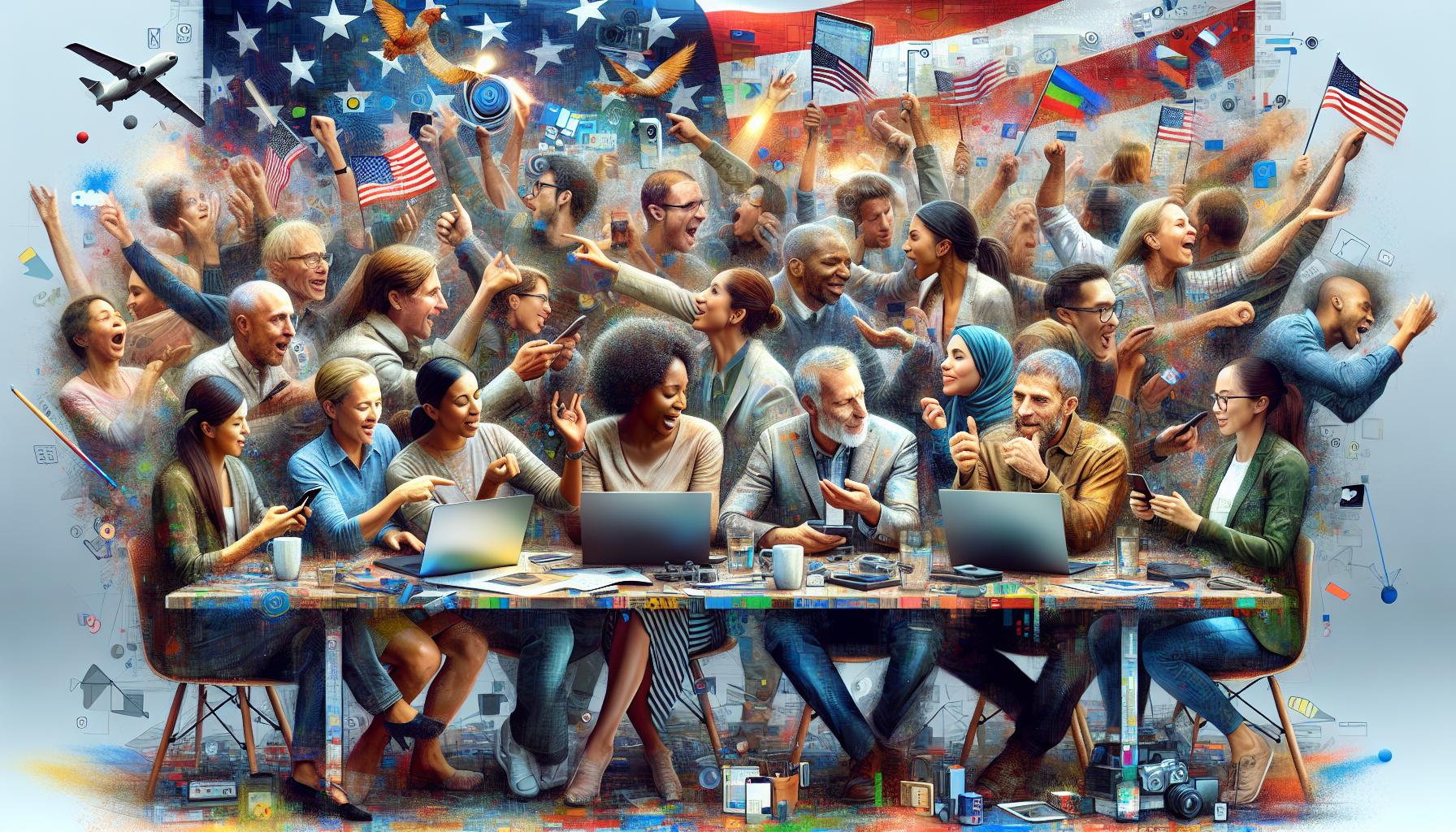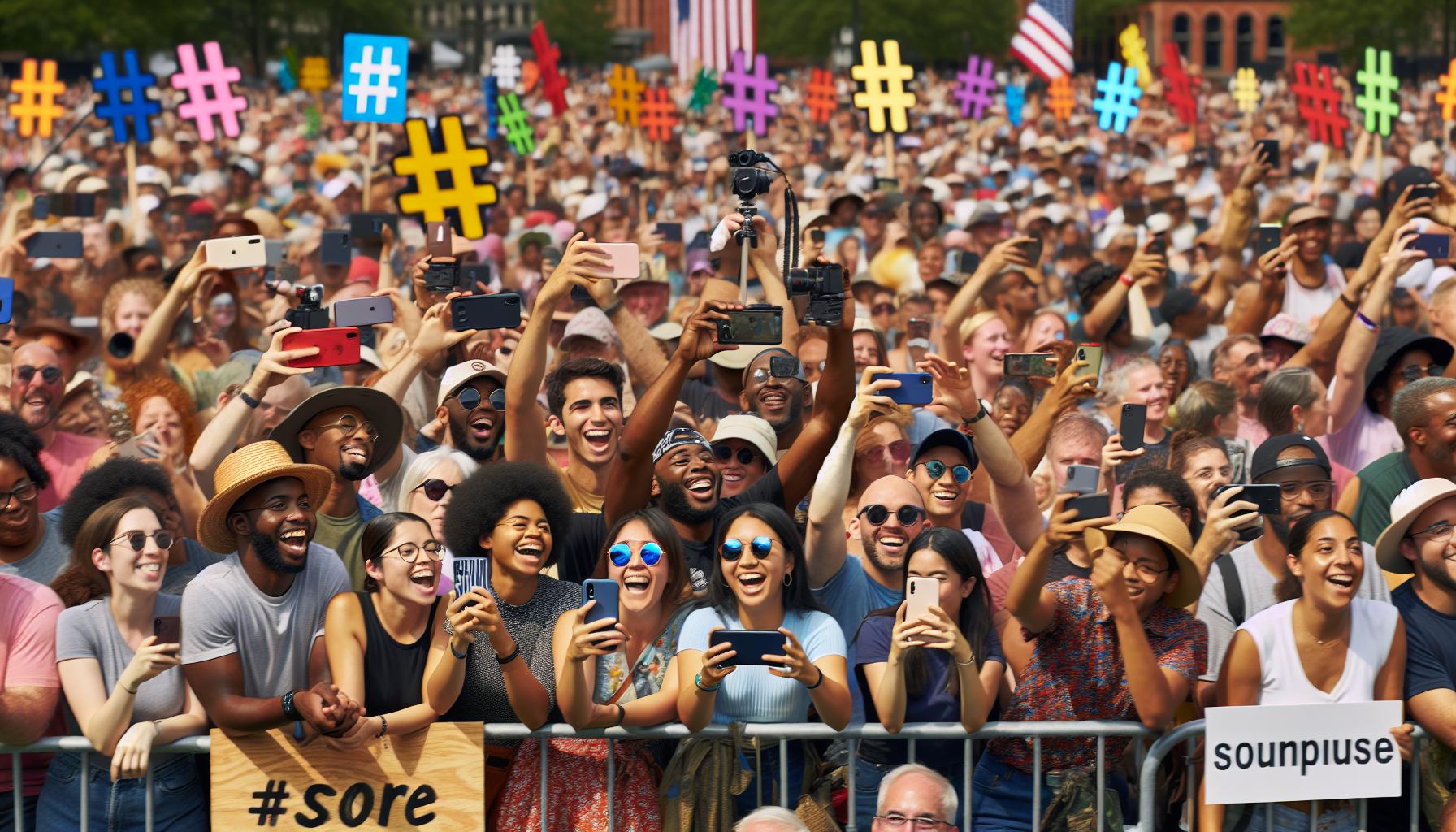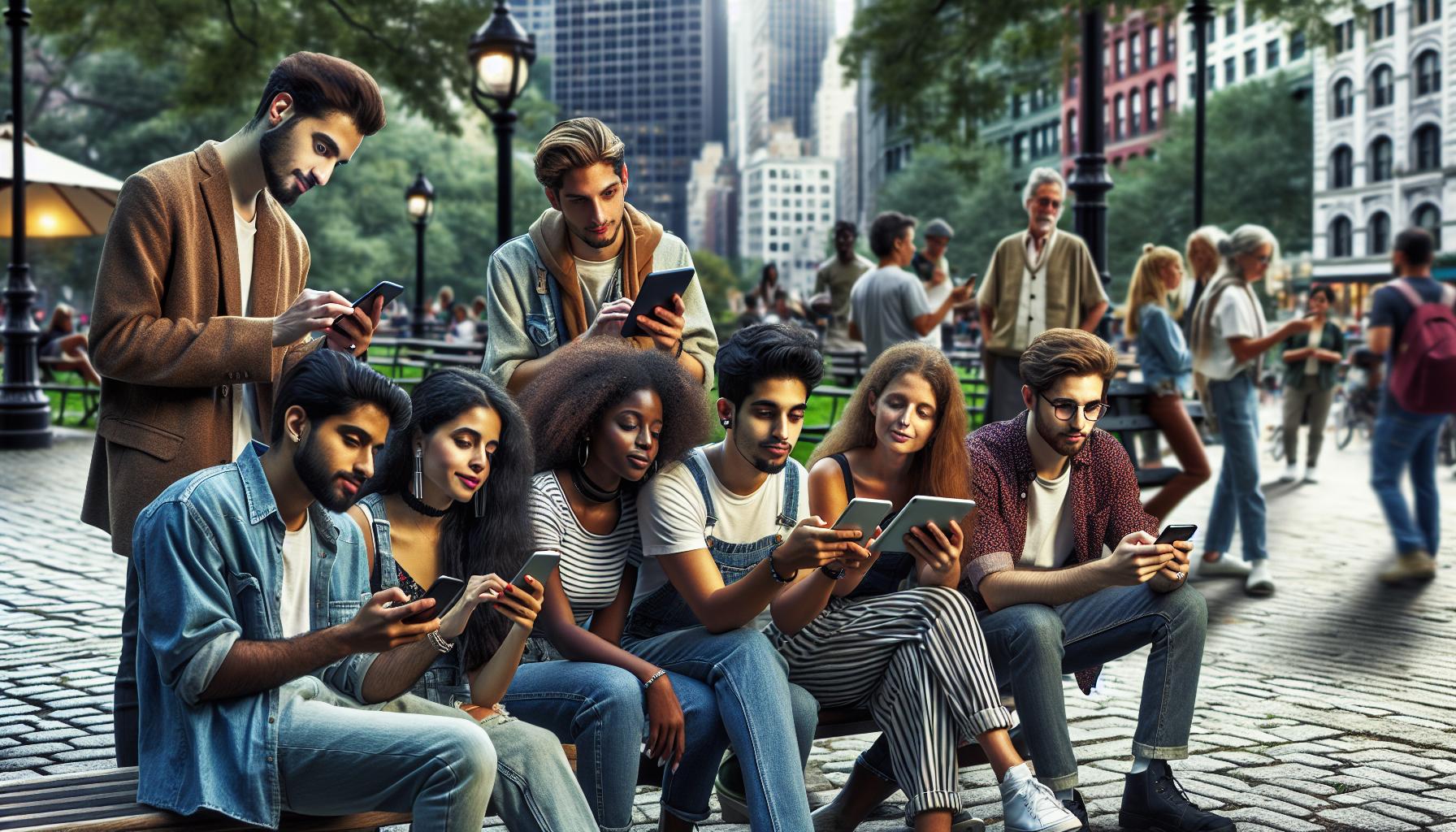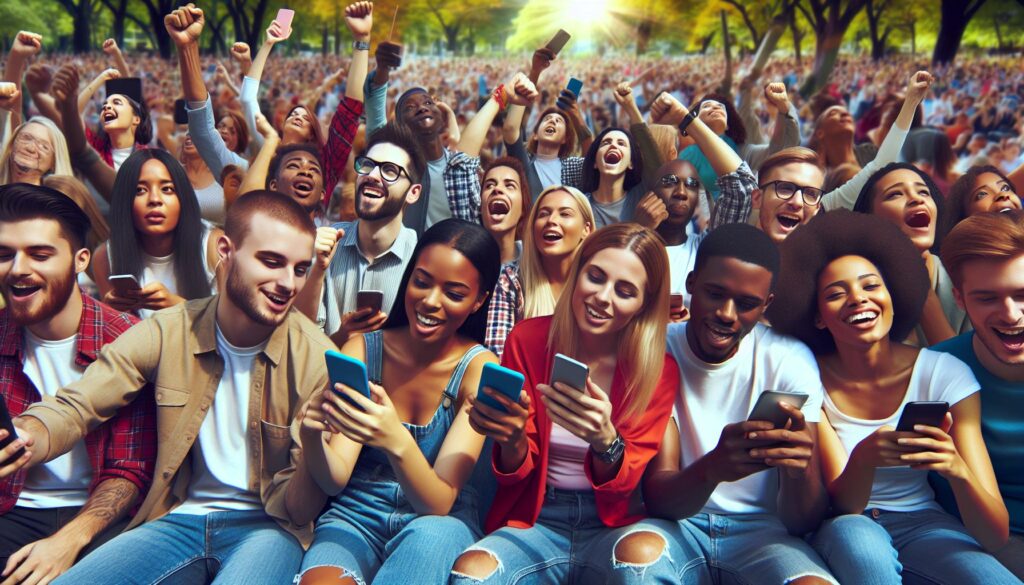In 2016, social media transformed into a wild rollercoaster ride, and everyone was invited. From the rise of live streaming to the explosion of Snapchat filters that made even the grumpiest cat look adorable, this year was nothing short of a digital circus. Brands scrambled to keep up with the latest trends, and users embraced the chaos, proving that when it comes to social media, it’s all about staying ahead of the curve—or at least trying not to fall off the ride.
As platforms evolved, so did the way people connected, shared, and even argued over the latest meme. With every scroll, users were bombarded with new features, viral challenges, and influencers who seemed to pop up overnight. Buckle up as we dive into the highlights of 2016’s social media trends, where the only constant was change—and maybe a few cat videos.
Social Media Trends 2016
In Social Media Trends 2016 emerged as a chaotic yet dynamic landscape. Live streaming captured widespread attention, allowing users to share real-time experiences. Brands faced challenges adapting to rapid changes, showcasing the difficulty of keeping up with user preferences. Snapchat filters became a remarkable trend, transforming user engagement through creative visuals.
Emerging influencers played a pivotal role in shaping online culture. Their content attracted significant followings, impacting marketing strategies across platforms. Viral challenges took center stage, prompting users to participate and share entertaining videos with friends. Engagement surged as users embraced these trends, seeking laughter and community.
Mobile devices solidified their status as primary platforms for social interaction. Short-form content gained traction, catering to the diminishing attention spans of users. Platforms like Instagram and Snapchat led the way, emphasizing visual storytelling. Marketers recognized the necessity of adapting content for these preferences.
Analytics tools provided essential insights into user behavior. Data-driven strategies became vital for brands aiming to optimize their social media presence. Companies prioritized authenticity and relatability, which resonated with audiences. As a result, user-generated content grew, fostering a sense of connection and trust.
Privacy concerns also surfaced as a significant trend in 2016. Users became more mindful of their data, influencing platform policies and user engagement. The ongoing evolution of social media influenced not just users but also the foundational approach to online marketing. Content creators continued to seek innovative ways to engage audiences in this ever-shifting landscape.
Key Platforms Impacted

Significant shifts in key social media platforms shaped user interactions in 2016. Each platform responded to user demands and social media trends 2016 by introducing innovative features designed to enhance engagement.
Facebook Innovations
Facebook introduced several features in 2016 aimed at improving user experience. Live video streaming became a prominent focus, allowing users and brands to share real-time content. Moreover, the addition of reactions provided more nuanced ways for users to engage with posts. Brands utilized these innovations to craft more interactive campaigns, enhancing their reach. Algorithm updates prioritized live content in news feeds, ensuring that users remained informed about trending topics. These changes positioned Facebook as a leader in social media engagement efforts.
Twitter Enhancements
Twitter implemented various enhancements that year to retain user interest and expand its audience. The introduction of a timestamp feature on live videos allowed users to share highlighted moments instantly. Additionally, Twitter expanded character limits for tweets, enabling richer content creation. This shift encouraged brands to create more engaging posts that could capture audience attention. Analytics tools also improved, equipping brands to analyze tweet performance and optimize strategies effectively. These developments facilitated a more dynamic user experience and helped brands harness Twitter’s unique real-time nature.
Instagram Growth
Instagram experienced remarkable growth in 2016, fueled by a series of significant updates. Story features, similar to Snapchat’s, revolutionized content sharing and engagement among users. Brands capitalized on this trend by using stories for promotions, polls, and behind-the-scenes content. User-generated content flourished as audiences sought authenticity, leading to increased brand loyalty. Furthermore, enhanced analytics tools allowed brands to track engagement metrics, refining their marketing approaches. As a result, Instagram solidified its status as a crucial platform for visual storytelling and influencer collaborations.
User Engagement Changes

User engagement experienced significant shifts in 2016, driven primarily by evolving content preferences and platform features.
Rise Of Video Content
Video content surged in popularity, capturing user attention more effectively than static posts. Platforms like Facebook and Instagram prioritized live videos, allowing real-time audience interaction. Users gravitated toward engaging formats, leading to a 43 percent increase in video views on social media. Marketers capitalized on this trend, creating authentic, behind-the-scenes content to foster connections. Live streaming became a go-to method for brands to showcase events, product launches, and Q&A sessions, enhancing overall engagement levels. This created an environment where quicker, visually appealing content took precedence, aligning with users’ preferences for instant entertainment.
Increased Use Of Hashtags
Hashtags gained traction as essential tools for categorizing content and enhancing discoverability. The strategic use of hashtags encouraged user participation, with posts featuring them receiving 12.6 percent more engagement than those without. Brands embraced this trend, implementing campaigns centered around unique hashtags to foster community involvement. This approach not only improved reach but also encouraged user-generated content, as audiences shared their experiences using specific tags. In 2016, Instagram observed a remarkable rise in hashtags, solidifying their role as vital elements for driving interaction and expanding brand visibility.
Influence Of Mobile Technology

Mobile technology significantly transformed social media interactions in 2016. Users increasingly relied on smartphones and tablets for content consumption and engagement, creating a fundamental shift in usage patterns. Short-form content rose in popularity as attention spans dwindled, making concise and entertaining formats essential.
Video emerged as a dominant medium, leading to a 43 percent increase in views on social media platforms. Engagement thrived through live streaming events and behind-the-scenes content, allowing brands to connect authentically with their audiences. Increased accessibility of mobile devices facilitated user participation in viral challenges, sparking community involvement and enhancing shareability.
Analytics tools became indispensable for understanding mobile user behavior. Brands analyzed data to develop targeted strategies focused on creating relatable and authentic content. This data-driven approach empowered organizations to resonate with audiences effectively.
Platforms embraced mobile-first design, optimizing user experiences for smaller screens. Facebook’s introduction of live video and reactions encouraged real-time interaction among users. Twitter’s enhancements, such as extended character limits, catered to mobile users seeking richer content. Instagram’s story features revolutionized content sharing, solidifying its role in shaping user engagement.
Trend analyses highlighted the importance of hashtags for content discoverability. Posts utilizing hashtags received 12.6 percent more engagement, prompting brands to launch unique hashtag campaigns. These campaigns fostered a sense of community while expanding visibility across platforms.
Mobile technology’s impact on social media in 2016 established new norms and opportunities. Increasing reliance on mobile content has continued to dictate user preferences and interaction styles, shaping the ongoing evolution of the social media landscape.
The Role Of Influencers
Influencers became essential in shaping marketing strategies during 2016. Their unique ability to connect with audiences transformed how brands approached advertising.
Sponsored Content Strategies
Brands increasingly turned to influencers for sponsored content strategies. This method allowed businesses to reach audiences effectively through authentic voices. Influencers crafted engaging narratives that resonated with their followers. The combination of relatability and exposure drove higher engagement rates. Statistics revealed that posts featuring influencers led to a 37 percent increase in brand awareness. Many companies adopted this strategy to remain relevant in the fast-paced social media landscape.
Authenticity and Trust
Trust became a crucial factor in influencer marketing. Audiences gravitated towards authentic content that reflected genuine experiences. Influencers who remained true to their brand values fostered stronger connections with followers. The importance of authenticity emerged clearly, as users preferred recommendations from relatable figures rather than traditional advertisements. Brands experienced an increase in customer loyalty when partnering with trusted influencers. Collaboration with these individuals unlocked opportunities for greater audience engagement and building community.
Pivotal Year of Transformation And Adaptation
Social media in 2016 marked a pivotal year of transformation and adaptation. The rise of live streaming and the influence of emerging creators reshaped how brands interacted with audiences. Mobile technology played a crucial role in this evolution, driving the demand for short-form content and enhancing user engagement.
As brands navigated this dynamic landscape, analytics tools became vital for understanding consumer behavior and refining marketing strategies. Authenticity and relatability emerged as key themes, with user-generated content fostering deeper connections. The growing concerns around privacy also influenced how platforms operated, emphasizing the need for trust in user interactions.
These social media trends 2016 not only defined 2016 but laid the groundwork for future developments in social media, highlighting the importance of staying agile in an ever-changing digital environment.



